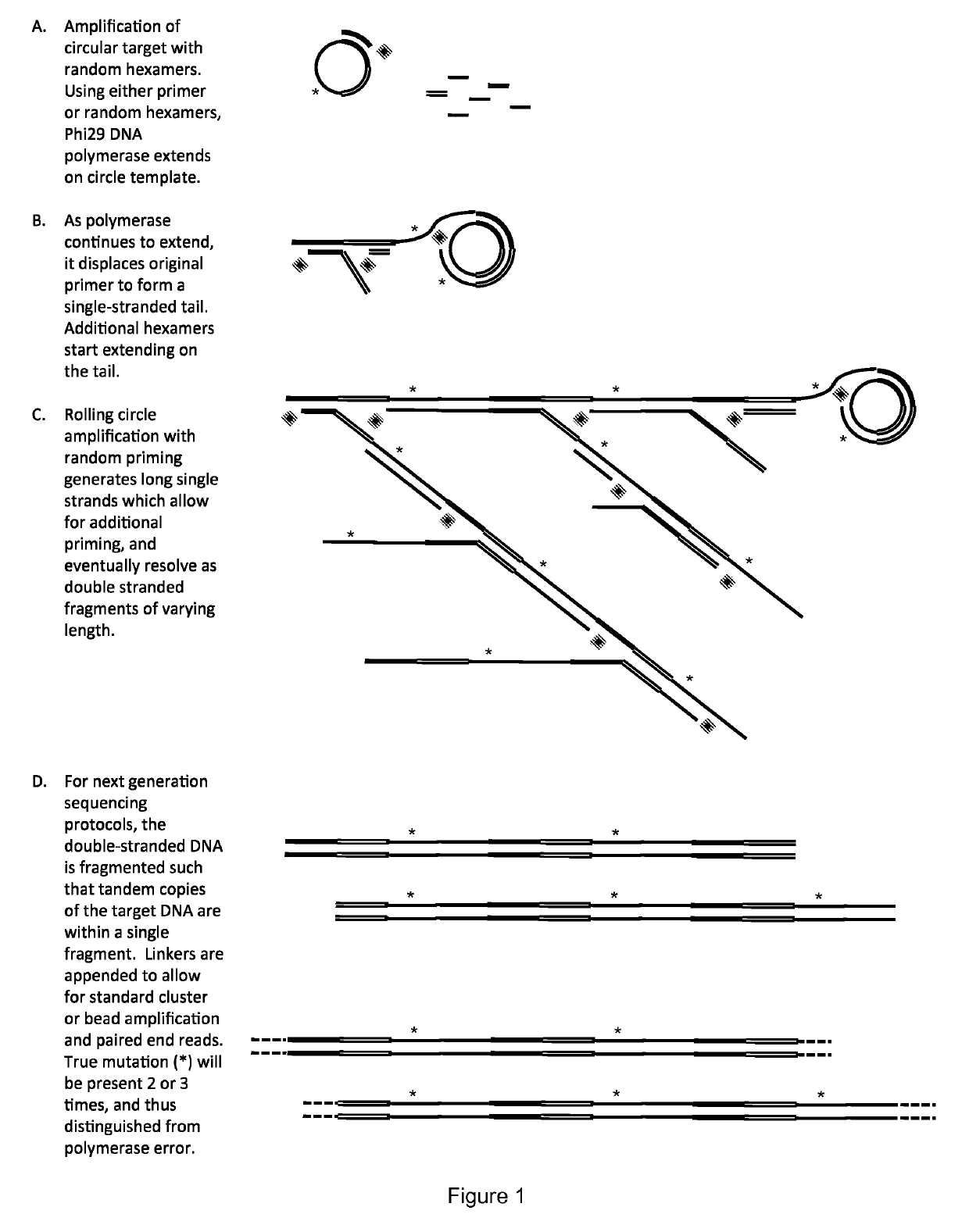Method for identification and enumeration of nucleic acid sequence, expression, copy, or DNA methylation changes, using combined nuclease, ligase, polymerase, and sequencing reactions
a nucleic acid sequence and methylation technology, applied in the field of nucleic acid sequence identification and methylation change identification and enumeration, can solve the problems of not being able to meet the best treatment, technical challenges, and beyond the reach of current sequencing technology, and achieve high-sensitivity detection, reduce false positives, and maximize the sensitivity of capture
- Summary
- Abstract
- Description
- Claims
- Application Information
AI Technical Summary
Benefits of technology
Problems solved by technology
Method used
Image
Examples
case 10
[0751 shows inherited Duchenne's muscular dystrophy, where the mother is a carrier. Under these conditions, the amount of the total amount of two X-chromosome alleles appears half of other positions. In case 11, the fetus does not have the disease, and in case 12 the disease is a sporadic mutation that appears in the fetus. The Y chromosome marker confirms the fetus in male. The above shows how genotyping would be performed at the DMD locus. If there is prior knowledge that the mother is a carrier, than phasing of the deletion with neighboring polymorphisms can be determined (see below), and then these neighboring polymorphisms may also be used to verify if the fetus also carries the deletion, and if the fetus is male, and susceptible to the disease. This approach may be used to find both X-linked and autosomal dominant changes.
[0752]To determine if the fetus contains an inherited or sporadic mutation on one of the roughly 3,500 other disorders, including deletions, point mutations,...
PUM
| Property | Measurement | Unit |
|---|---|---|
| temperature | aaaaa | aaaaa |
| temperature | aaaaa | aaaaa |
| temperature | aaaaa | aaaaa |
Abstract
Description
Claims
Application Information
 Login to View More
Login to View More - R&D
- Intellectual Property
- Life Sciences
- Materials
- Tech Scout
- Unparalleled Data Quality
- Higher Quality Content
- 60% Fewer Hallucinations
Browse by: Latest US Patents, China's latest patents, Technical Efficacy Thesaurus, Application Domain, Technology Topic, Popular Technical Reports.
© 2025 PatSnap. All rights reserved.Legal|Privacy policy|Modern Slavery Act Transparency Statement|Sitemap|About US| Contact US: help@patsnap.com



